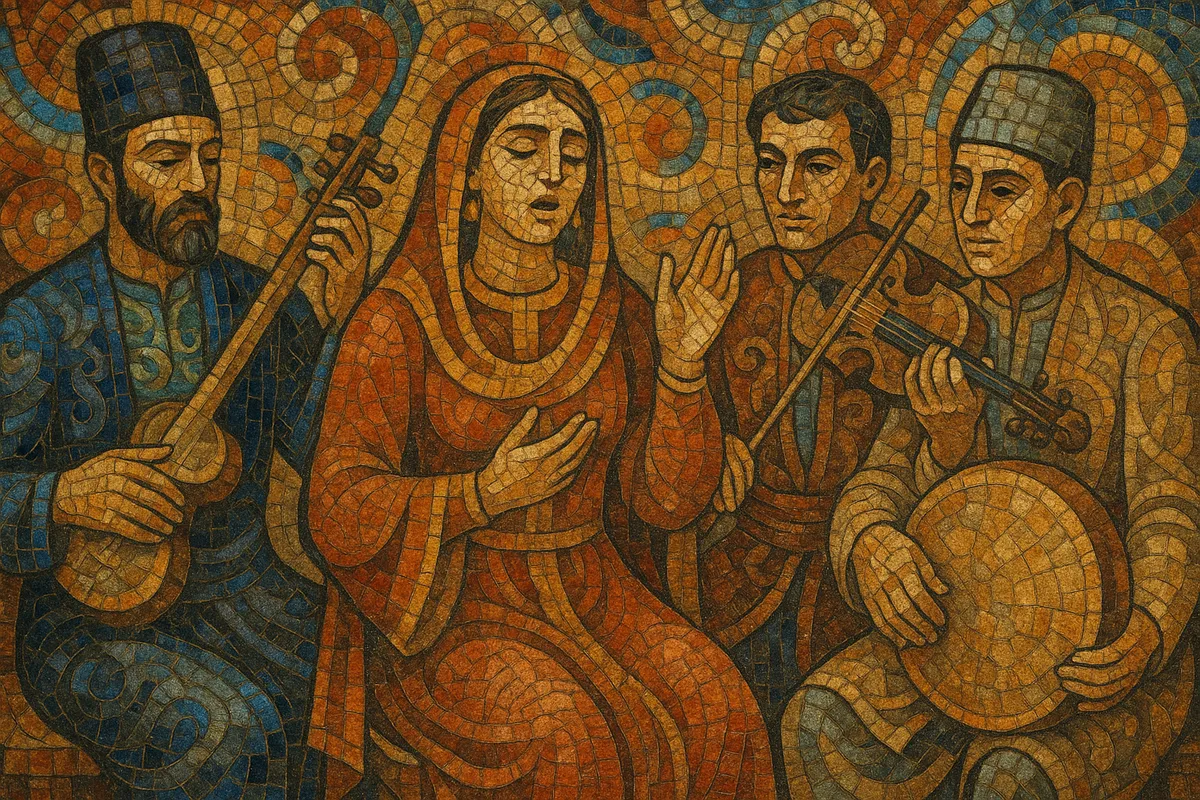
Azerbaijani music is a broad tradition from the South Caucasus that spans courtly modal art music (mugham), bardic ashig poetry-singing, rural dance bands with zurna–naghara, and 20th–21st century composed, pop, and jazz hybrids.
Its art core is the modal system of mugham—suites built on named modes (Rast, Shur, Segah, Chargah, Bayati-Shiraz, Shushtar, Humayun), microtonal inflection, and improvisation by a khananda (vocalist) accompanied by tar, kamancha, and gaval. Alongside this stands the ashig (ashugh) tradition, in which poet-singers accompany themselves on the saz to deliver epic love, mystic, and social poetry in intricate meters. Across the 20th century, Azerbaijani composers, crooners, and innovators fused these idioms with opera, symphonic writing, estrada/pop, and jazz to create distinct modern styles such as symphonic mugham and jazz-mugham.
Pre-modern Azerbaijani musical culture crystallized around mugham, a modal, microtonal art music related to the wider maqām traditions of West and Central Asia. Its performance practice centers on an improvising singer (khananda) supported by tar, kamancha, and the gaval frame drum, moving through a sequence of modal sections and emotional peaks. Parallel to this, the ashig (ashugh) bardic tradition—poet-singers accompanying themselves on saz—transmitted epic narratives and lyric poetry.
In the 19th century, instrument makers and performers such as Sadigjan reshaped the Caucasian tar, expanding its range and technique and cementing the classic mugham trio sound. In 1908, Uzeyir Hajibeyli premiered Leyli and Majnun, often cited as the first mugham-opera, inaugurating a national school that married Western forms and harmony with Azerbaijani modal vocabulary. Urban ensembles also popularized dance tunes (rengs) and vocal romances, while rural zurna–naghara bands animated weddings and festivities.
Under Soviet cultural policy, conservatories, radio, and state ensembles professionalized folk and art traditions. Composers including Fikrat Amirov created "symphonic mugham," scoring modal progressions for orchestra while retaining improvisatory feeling. Crooners such as Rashid Behbudov and the baritone Muslim Magomayev brought Azerbaijani melody into estrada (popular stage music). From the late 1960s, pianist Vagif Mustafazadeh pioneered jazz-mugham, fusing mugham modes and free-meter taqsim-like improvisation with jazz harmony and swing, a path furthered internationally by Aziza Mustafa Zadeh.
After 1991, a renewed folk revival, conservation of mugham (recognized by UNESCO), and pop/jazz growth diversified the scene. Alim Qasimov and Fargana Qasimova brought intensely expressive mugham to world stages. Parallel currents include street-wise meyxana (improvised rhymed declamation over percussion), mainstream pop and Eurovision-era production, as well as ongoing classical and orchestral fusions. The result is a living tradition where centuries-old modal craft interacts with contemporary songcraft and global genres.

